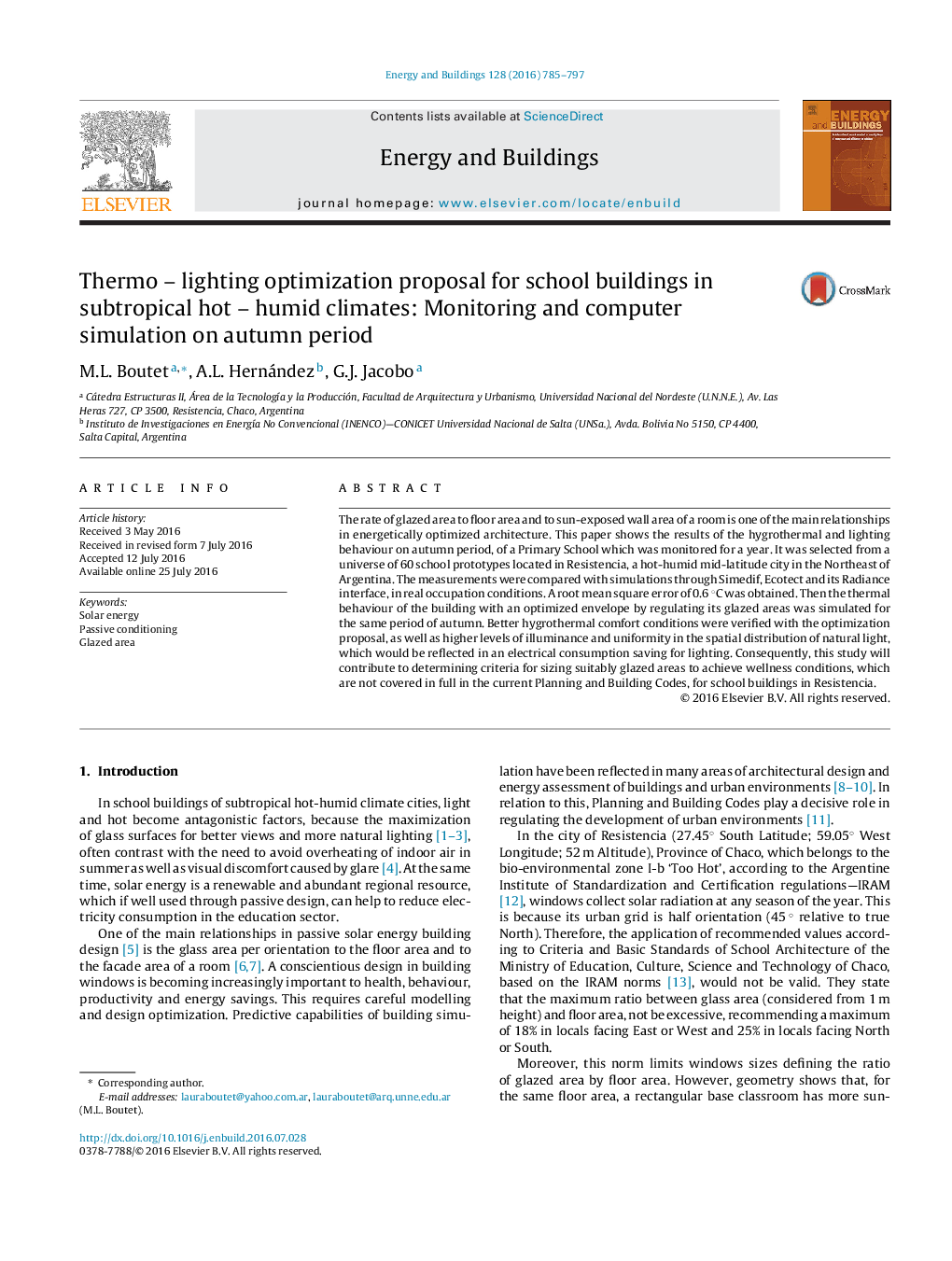| Article ID | Journal | Published Year | Pages | File Type |
|---|---|---|---|---|
| 6729901 | Energy and Buildings | 2016 | 13 Pages |
Abstract
The rate of glazed area to floor area and to sun-exposed wall area of a room is one of the main relationships in energetically optimized architecture. This paper shows the results of the hygrothermal and lighting behaviour on autumn period, of a Primary School which was monitored for a year. It was selected from a universe of 60 school prototypes located in Resistencia, a hot-humid mid-latitude city in the Northeast of Argentina. The measurements were compared with simulations through Simedif, Ecotect and its Radiance interface, in real occupation conditions. A root mean square error of 0.6 °C was obtained. Then the thermal behaviour of the building with an optimized envelope by regulating its glazed areas was simulated for the same period of autumn. Better hygrothermal comfort conditions were verified with the optimization proposal, as well as higher levels of illuminance and uniformity in the spatial distribution of natural light, which would be reflected in an electrical consumption saving for lighting. Consequently, this study will contribute to determining criteria for sizing suitably glazed areas to achieve wellness conditions, which are not covered in full in the current Planning and Building Codes, for school buildings in Resistencia.
Keywords
Related Topics
Physical Sciences and Engineering
Energy
Renewable Energy, Sustainability and the Environment
Authors
M.L. Boutet, A.L. Hernández, G.J. Jacobo,
